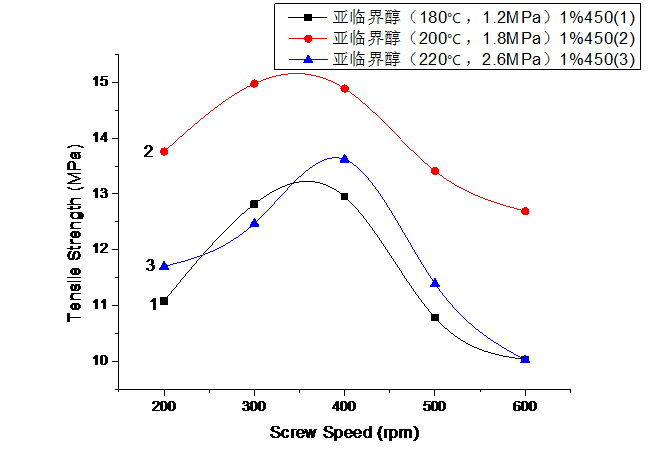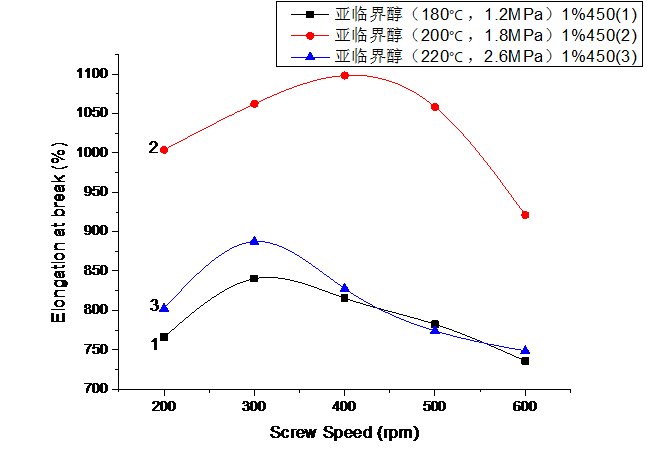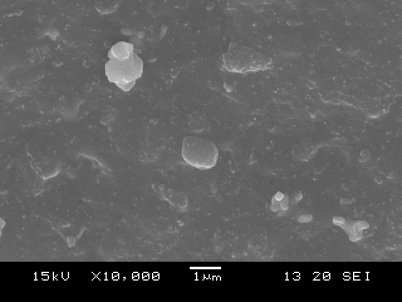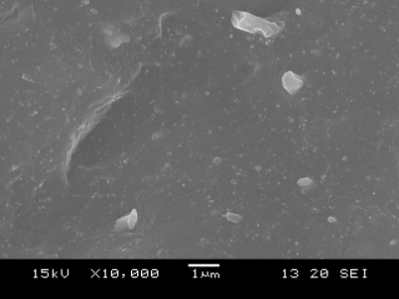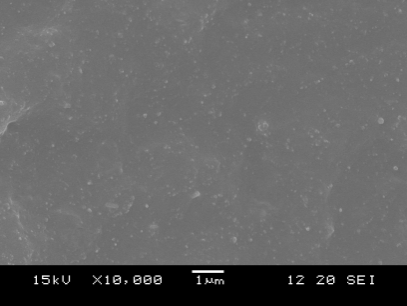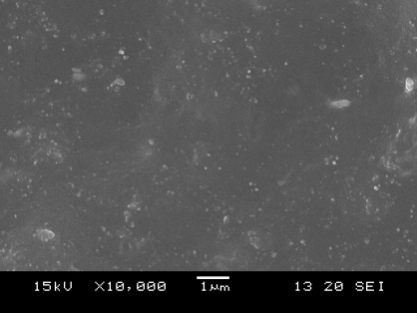亚临界水挤出下IIR基轮胎胶应力诱导脱硫研究—EPDM载体下螺杆转速和温度的影响毕业论文
2020-05-22 20:59:57
摘 要
本文采用双螺杆挤出法,在以EPDM为载体挤出过程中,采用注入亚临界醇(即沸点以上,临界点以下的醇)和改变螺杆转速和挤出温度的复合诱导脱硫的方法,研究了挤出温度和螺杆转速对脱硫共混物凝胶含量、门尼粘度、电镜分析及脱硫共混丁基胶再硫化材料((DGTR/EPDM)/IIR)力学性能的影响。实验结果表明:亚临界醇作为一种反应性介质和溶胀剂,能够促进脱硫反应,提高交联键发生断裂的选择性,抑制氧化降解副反应,降低脱硫产物的凝胶含量和凝胶颗粒尺寸并明显提高脱硫共混物共混丁基橡胶再硫化材料的力学性能;当一定含量(1%)的450作为一种促进剂,在最优的亚临界醇挤出条件下(200℃,1.8Mpa,400rpm),再硫化材料的拉伸强度和断裂伸长率分别达到14.89Mpa和1098.41%。
关键词:脱硫再生 亚临界 高剪切应力 挤出温度 力学性能
The devulcanization of IIR based ground tire rubber in subcritical alcohol- the effects of twin-screw extruder parameters
ABSTRACT
This paper adopts twin screw extrusion process, extrusion as the carrier in the EPDM, the injection of subcritical alcohols (i.e. boiling above, below the critical point of the alcohol) and change the screw speed and extrusion temperature induced by the combination of desulfurization method of extrusion temperature and screw speed on the gel content of desulfurization blends of Mooney viscosity, electron microscope analysis butyl rubber vulcanization and desulfurization blend materials ((dgtr/epdm) /iir) influence the mechanical properties. The experimental results show that subcritical alcohol as a reaction medium and swelling agent, can promote the desulfurization reaction, improving the selectivity of crosslinking bond cleavage, inhibition of oxidative degradation reaction, lower gel content and gel particle size of desulfurization products and obviously improve the desulfurization of mixture of butyl rubber and mechanical properties of vulcanized material; when the content (1%) of the 450 as a promoter in the optimal alcohol subcritical extruder The tensile strength and elongation at break of the 1.8MPa, 400rpm,, and the elongation at break of the material reached 14.89mpa and 1098.41%. respectively.
Key words:Desulfurization regeneration;subcritical;shearing force;Extrusion temperature; mechanical property
目 录
摘要 I
ABSTRACT II
第一章 前言 1
1.1橡胶再生方法研究进展 1
1.1.1物理法 1
1.1.2化学法 2
1.1.3微生物法 3
1.2亚临界流体对脱硫反应的影响 3
1.3再生胶的应用 4
1.4本文研究对象、手段 4
1.5本课题研究的意义 5
第二章 实验部分 6
2.1实验概述 6
2.2实验原料 6
2.3实验仪器与设备 6
2.4实验方案 7
2.4.1实验步骤 7
2.4.2硫化配方的选择 7
2.4.3实验流程图 8
2.5实验样条制备 8
2.5.1脱硫工艺流程 8
2.5.2混炼胶制备 8
2.5.3压片 9
2.5.4 制样 10
2.6性能测试 10
2.6.1凝胶含量 10
2.6.2门尼粘度 10
2.6.4SEM分析(试样断面) 11
第三章 结果与讨论 12
3.1 概述 12
3.2实验分组情况 12
3.3结果分析与讨论 12
3.3.1 脱硫共混物凝胶含量 12
3.3.2 脱硫共混物的门尼粘度 13
3.3.3转速和温度对再硫化材料力学性能的影响 14
3.3.4再硫化材料扫描电镜观察与分析 15
第四章 结论与展望 17
4.1结论 17
4.2展望 17
参考文献 19
致谢 21
第一章 前言
1.1橡胶再生方法研究进展
当前国内外文献上关于橡胶脱硫的方法总共可以分为三大种:物理法脱硫再生,化学法脱硫再生,微生物法脱硫再生[1]。
1.1.1物理法
物理法的原理是根据C-C(347kJ/mol)键的键能比S-S(213kJ/mol)键或者C-S(259kJ/mol)键的键能大,也就是说在外界能量作用下硫桥比C-C主链更容易断裂,利用这一特性来使废弃橡胶解交联获得线性结构[2]。而这种外界能量的作用可以是高剪切应力,也可以是热量,还可以是微波、超声波、能量射线等[3]。这些方法各有个的优缺点,总节来说,优点是除了剪切应力外选择性很好,即可以准确破坏交联键而不断裂主链,但缺点也很明显,对设备要求高,只能小规模表面性地处理,想达到工业化生产还需进一步研究。这里我着重介绍一下与本实验相关地剪切应力法脱硫和研究比较深入的微波法脱硫。
(1)剪切应力法
相关图片展示:
